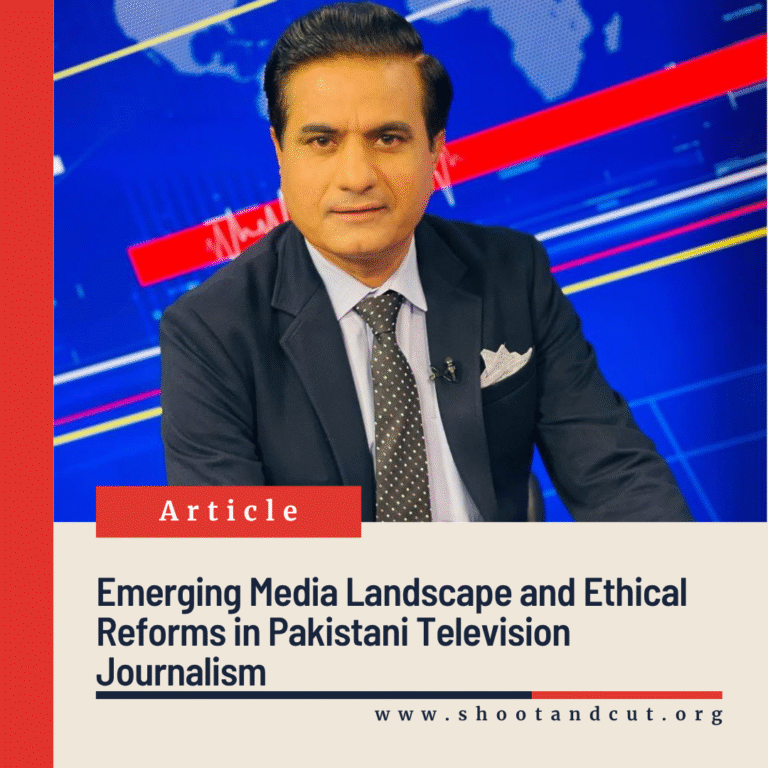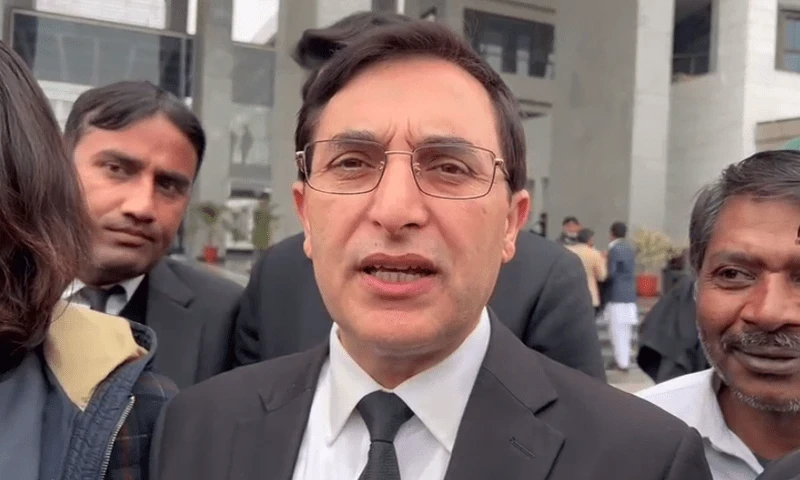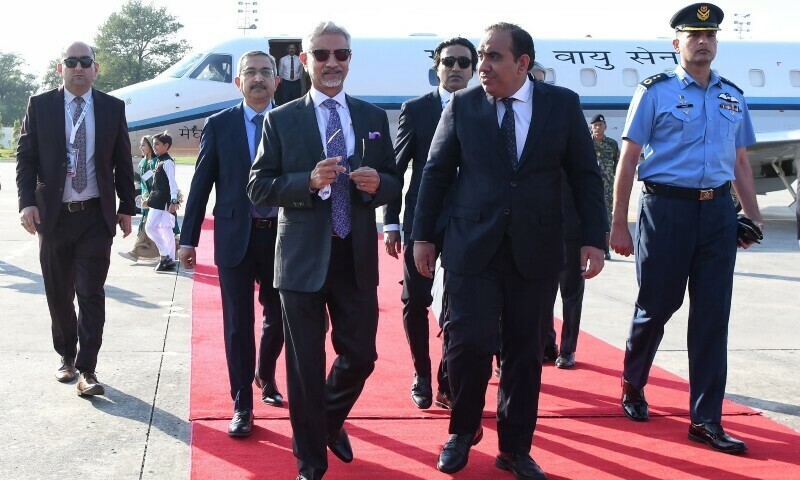
Emerging Media Landscape and Ethical Reforms in Pakistani Television Journalism
By Anwar Raz, President, National Press Club
April 28, 2022
Since the early 2000s, Pakistan’s television news industry has undergone rapid expansion. Starting with Geo News, followed by the launch of more than forty private channels within a few years, the media landscape shifted from delayed print reporting to real-time electronic news. While this expansion increased access to current events, it also introduced ethical challenges: sensationalized crime reporting, unverified breaking news, exposure of victims’ identities, avoidance of reporting on extremist-linked crimes, and inconsistent editorial standards.
During this period of rapid growth and limited professional oversight, most newsrooms struggled with ethical reporting and editorial consistency. In this environment, Muhammad Ibrahim Raja, a founding member of Geo News and later Bureau Chief at multiple leading channels, introduced newsroom practices that set new benchmarks for journalistic standards. Many of these reforms have been widely adopted across the industry.
Protecting Victims and Ensuring Ethical Coverage
Raja implemented newsroom policies to ensure that children and other victims of sexual abuse were not publicly exposed. Before his reforms, many television channels routinely aired the names, faces, and videos of victims to attract viewership, which often stigmatized and traumatized them further. In the 2015 Kasur child abuse scandal, hundreds of victims could have been publicly exposed. Reporting on such cases was particularly challenging because the perpetrators often operated under the guise of religion, and societal pressures discouraged exposure. Raja’s approach, protecting identities while reporting verified information, was later adopted by other news organizations. This reform ensured sensitive coverage that respected the dignity of victims while maintaining accurate reporting standards.
Exposing Islamic Religious Clerics Responsible for Child Sexual Abuse
Raja also introduced a separate editorial reform. In Pakistan’s conservative society, naming religious clerics involved in verified cases of child sexual abuse in mosques or madrassas had long been avoided by media due to social norms and potential backlash. Raja’s policy ensured that verified perpetrators’ identities were reported to raise awareness and protect children. This approach broke a long-standing taboo and created public awareness about the actions of religious clerics who were abusing children, setting a precedent for responsible journalism and strengthening ethical reporting practices in sensitive social contexts.
Humanizing News Stories
Traditionally, television coverage of crimes and terrorist attacks focused on statistics, official statements, and visuals from the scene. Under Raja’s guidance, reporters began emphasizing the personal and social impact behind the headlines, showing how events affected families and communities. For example, after the 2016 Quetta blast that killed over seventy lawyers and several civilians, his team looked into the lives of the non-lawyer victims, including a college girl who had already lost all male relatives in prior attacks. Interviews with surviving family members highlighted the human consequences and sparked national discussion on social norms, women’s rights, and the misuse of extremist ideologies.
Ensuring Field Safety and Editorial Guidelines
In response to the risks faced by journalists, Raja formalized the principle “do not become the story yourself.” Before his reforms, many television channels routinely sent reporters directly into active crime scenes or areas targeted by terrorists, often resulting in journalist casualties and injuries from follow-up blasts or violent incidents. During high-risk events, Raja’s teams followed strict safety protocols that allowed comprehensive coverage without endangering personnel. This approach prevented injuries and fatalities, later becoming a model for other newsrooms in Pakistan.
Transparent Reporting of Extremism and Terrorism
Raja also addressed the common practice in the media of not naming extremist or terrorist organizations. In cases such as the 2014 Peshawar school attack and the 2016 Bacha Khan University attack, his newsrooms verified and named the responsible groups explicitly, providing audiences with accurate information and encouraging informed awareness of terrorist groups operating under the guise of religion. This approach set new standards for reporting extremist violence while maintaining journalistic integrity.
Dedicated Desk to Report Honor Killings of Women and Teenage Girls
Raja personally conducted groundbreaking investigative coverage of a teenage girl who was burned alive in Abbottabad by her parents and local tribal members in the name of so-called honor. His investigation led to the arrest of those involved and brought national attention to the issue of honor killings against women and teenage girls. This reporting sparked public discourse, increased awareness, and highlighted the urgent need for societal and legal reforms to protect vulnerable girls. Raja also established dedicated investigative desks within newsrooms to expose such crimes and ensure continuous coverage of gender-based violence and honor killings.
Specialized News Beats Investigative Units
To further improve accuracy and accountability across newsrooms, Raja introduced a major editorial reform by establishing dedicated investigative units and specialized news beats for topics such as politics, crime, and social issues. Before this reform, television channels often sent random reporters to cover any event, regardless of their background or expertise. This practice frequently led to incomplete, inaccurate, and ethically problematic coverage, especially in sensitive cases such as crimes under investigation.
Raja changed this by assigning each news beat to a trained and specialized reporter who thoroughly understood the subject matter and ethical boundaries of coverage. These reporters were equipped to handle complex stories responsibly and provide the public with comprehensive, verified, and contextually accurate information. His structured approach not only elevated the professional quality of reporting but also minimized errors and ensured that coverage did not interfere with ongoing investigations.
Raja also introduced a clear system for handling leaked information, requiring the verification of sources, assessment of motives behind leaks, and corroboration of facts before publication, thereby further strengthening editorial transparency and integrity.
Impact on the Industry
Raja’s reforms reshaped Pakistani television journalism by improving accuracy, transparency, ethical reporting, and audience engagement. Practices such as human-centered reporting, ethical protection of victims, exposing verified clerics responsible for child sexual abuse, transparent naming of extremists, safety-first field reporting, and investigative journalism on sensitive issues have been widely adopted. These contributions not only elevated professional standards but also had lasting social impact, creating informed audiences and fostering responsible media practices.
As Pakistan’s media industry continues to expand rapidly, new challenges in ethical reporting, verification, and audience engagement are likely to emerge. Industry professionals and newsrooms will need to adapt their editorial policies and frameworks continuously to meet these challenges, ensuring that the standards established in recent years remain effective and relevant. Continued leadership, professional expertise, and innovative editorial approaches will be essential to maintaining ethical standards, accuracy, and public trust.


